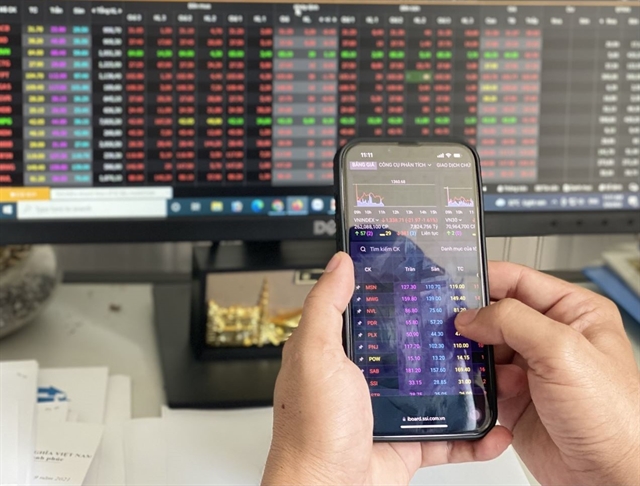 Economy
Economy

 |
| An investor watches market movements at a securities house in Hà Nội. — VNA/VNS Photo |
HÀ NỘI — Việt Nam's stock market has experienced a choppy road in the first quarter, as investors had high hopes for the market's performance, which instead recorded its weakest first quarter in three years.
The market benchmark VN-Index, managed a modest increase of just 3.16 per cent, falling significantly short of historical trends and expectations.
The year kicked off with an initial downturn, but the market saw a reversal mid-January, showing signs of recovery accompanied by a steady improvement in liquidity. However, this upward momentum faltered around mid-March, before transitioning into another corrective phase.
The tepid gains of the VN-Index serve as a stark contrast to the average performance in previous years, where the index typically enjoyed greater increases, often in double digits.
A closer examination reveals that significant contributors to the quarter’s limited growth included major players like Vingroup, particularly the stocks of VIC and VHM, which collectively added nearly 29 points to the index.
In contrast, FPT Corporation (FPT) emerged as the largest detractor, subtracting almost 11 points from the VN-Index.
The broader market sentiment illustrates a landscape of divergence, indicating that while some stocks flourished, others suffered, leading to an overall lacklustre performance for many investors.
Entering 2025, the Vietnamese stock market was buoyed by optimism, driven by government policies aimed at stimulating economic growth, including accelerated public investment and a commitment to maintain loose monetary policies.
These strategic initiatives were anticipated to usher the country into what is being termed the 'Era of national rise', intended to foster a more robust market environment.
Moreover, the prospect of an upgrade in the country's market classification has gained traction.
Recent decisions, such as the issuance of Circular 68 aimed at easing restrictions on foreign ownership and the ongoing enhancement of the KRX system and CCP payment mechanisms, have drawn positive appraisal from rating agencies.
These developments are believed to potentially attract an influx of foreign capital, an outcome that many investors are eagerly anticipating.
Additionally, some foreign funds perceive Vietnamese stocks as offering attractive pricing after a prolonged period of subdued performance.
The head of the Pyn Elite Fund, Petri Deryng, said recently in an investor letter, that the current valuation of Vietnamese equities presents a compelling case, forecasting a near 20 per cent earnings growth for local companies by the end of 2025.
This optimism is echoed in reports from investment firms like Dragon Capital, which highlighted that the price to book (P/B) ratios for the top 80 firms surveyed are at a decade-low, suggesting undervaluation.
Despite the potential for growth, the reality remains that foreign investors have continued to sell off stocks significantly.
In the first quarter alone, foreign investors offloaded nearly VNĐ26 trillion (US$1 billion) on the Hồ Chí Minh Stock Exchange (HoSE), a trend that clashes with prevailing forecasts predicting increased foreign funds ahead of potential market upgrades.
Analysts anticipate the KRX will launch on May 5, while the FTSE may decide to elevate Việt Nam to emerging market status by September.
Conversely, the MSCI upgrade timeline could be more protracted, hinging on the resolution of comprehensive policies concerning foreign ownership limits.
Given the past trends and current evaluations, the long-term outlook for Việt Nam's stock market appears optimistic, albeit short-term fluctuations are likely inevitable. Market participants remain cautious, aware of external pressures, such as global capital flows, geopolitical tensions and shifts in fiscal policy from major economies like the US. — BIZHUB/VNS


.jpg)

